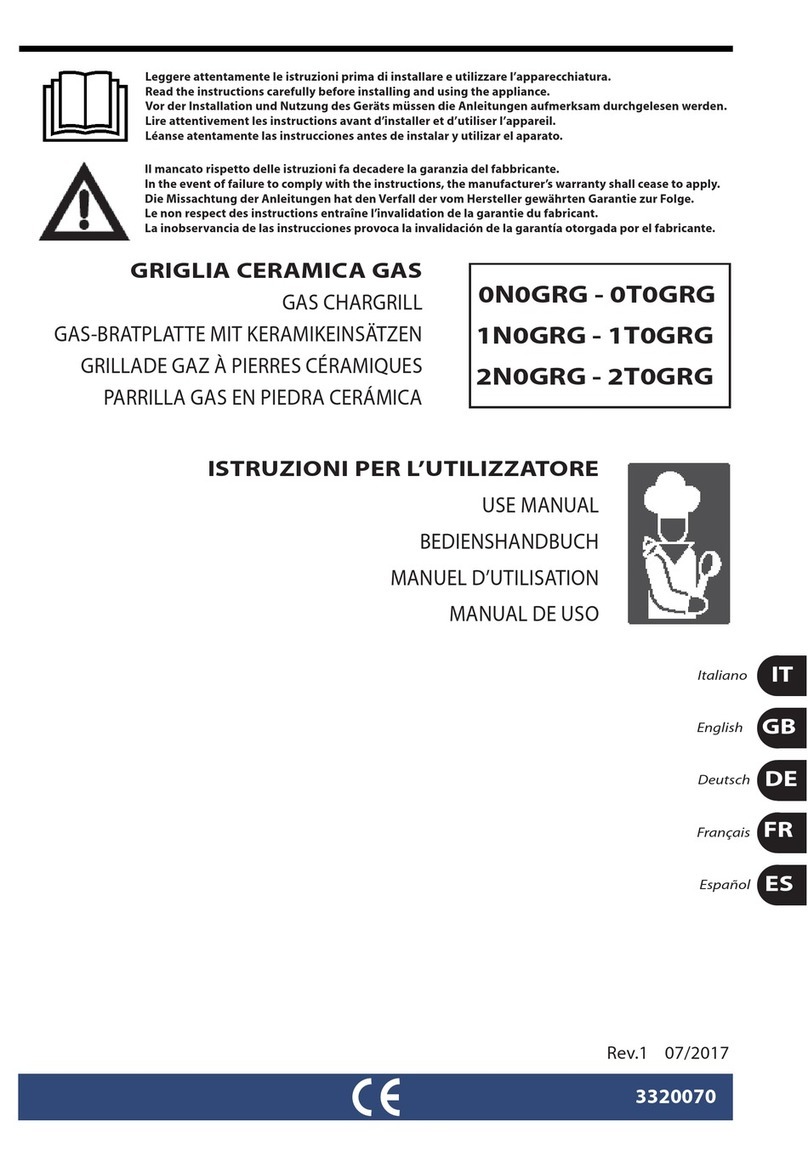
English
ref. chapters page
1 GENERAL INFORMATION................................................ 2
2 TECHNICAL INFORMATION............................................. 4
3 SAFETY ............................................................................. 6
4 USE AND OPERATION ..................................................... 7
5 SERVICING ....................................................................... 9
6 FAULT.............................................................................. 12
7 HANDLING AND INSTALLATION ................................... 13
8 ADJUSTMENTS............................................................... 17
9 REPLACING PARTS ....................................................... 19
ANNEXES
................................................................ I÷IV
AAdjusting gas control valve
minimum setting, 17
Appliance and manufacturer,
identification, 3
Appliance, general description, 4
Appliance, installation, 14
Appliance, lengthy downtimes, 9
Appliance, testing, 17
Appliances in banks, assembly, 15
Assembly appliances in banks, 15
CChecking gas pressure, 12
Cleaning instructions, 10
Cleaning the burner, 11
Cleaning the cooking plate, 10
manufacturer and appliance,
identification, 3
Controls, description, 8
Conversion of gas supply, 16
DDecommissioning and scrapping
the appliance, 20
Description of controls, 8
FFaults, troubleshooting, 12
GGas connection, 16
Gas control valve minimum setting,
adjustment, 17
Gas pressure, checking, 12
Gas supply, conversion, 16
Gas tap, greasing, 18
Gas, checking pressure, 12
General description of appliance, 4
General safety precautions, 6
Greasing the gas tap, 18
HHandling and lifting, 14
IIdentification of manufacturer and
appliance, 3
Information for the reader, 2
Installation of the appliance, 14
Instructions, cleaning, 10
Instructions and warnings for the
reader, 2
Instructions and warnings for safety, 6
Instructions and warnings for use and
operation, 7
Instructions and warnings for use, 9
Instructions and warnings for servicing,
9
Instructions and warnings for handling
and installation, 13
Instructions and warnings for
adjustments, 17
Instructions and warnings for replacing
parts, 19
LLengthy downtimes of appliance, 9
Lifting and handling, 14
OOptional accessories, 5
PPackaging and unpacking, 13
Procedure for requesting service, 3
Purpose of the manual, 2
RReplacement of the burner nozzle,
19
Replacement of the pilot light injector, 20
Replacing the burner air bushing, 19
Room ventilation, 14
SSafety and information signs, 5
Safety and information, signs relating
to, 5
Safety devices, 4
Safety, devices for, 4
Safety warnings and instructions
concerning electrical equipment, 7
Service, procedure for requesting, 3
Servicing, recommendations for, 9
Standard accessories, 5
Switching the burner on and off, 8
TTechnical data, 4
Testing of the appliance, 17
Transport, 13
Troubleshooting, 12
UUnpacking and packaging, 13
1st PART
2nd PART




























